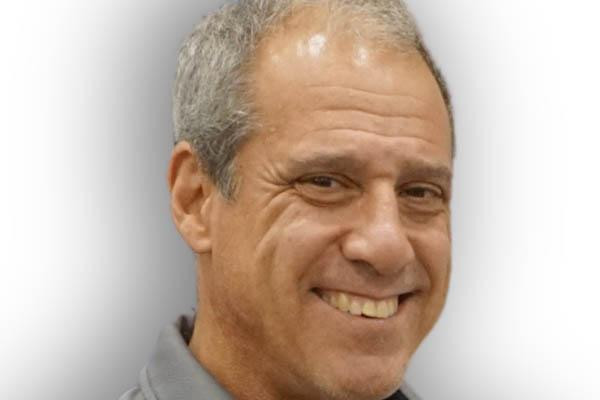How One Body Shop 'Owner-Operator' is Moving to Just 'Owner'
Mitch Langner has a successful shop in Minnesota, but is working with a business consultant to run it more efficiently and precisely — so an employee can take over one day.
realized he was spending too much time on the job — literally. The owner of Oak Ridge Auto Body in East Bethel, MN, could legit say he was doing OK. He bought a 3,400-square-foot shop in 2019, more than doubled its size to 8,300 square feet by 2023, with another 4,000, give or take, possible for the future. He’s got six employees now and has tripled revenue since 2020.
New equipment with the expansion, investing in some of the new technology — well, to be honest, maybe that website could use some work — and a growing family in his home state. It was essentially a full renovation of the legacy shop he bought, and brought into the 21st century. The shop has no DRPs.
“We modernized everything we could,” Langner said, from paint booth and a welder to floor heat and A/C, “a bright, clean space to attract and keep employees, so work can be an enjoyable part of their day.”
The plan seemed to be working.
Except there really was no plan.
Topline money coming in, but it was a good thing nobody asked about specifics. There was no one to ask anyway, because he was the guy. The buck stopped here — and started there too.
“I’d been working in the shop,” Langner said. “The business needs me to get out of that, and start dealing with,” well, “the business.”
Six months ago, it was the same ol’, same ol’ — for him, for sure, and often for body shop ops generally.
“Working, paying bills,” he said. “I didn’t know how many refinish hours we’re getting out of can of clear.”
 Oak Ridge Auto Body.
Oak Ridge Auto Body.
That makes sense. It’s not uncommon. Always something urgent body-checking the important into the boards and never seeming to get flagged for unsportsmanlike conduct.
It made sense for Langner. Through a family friend growing up, he’d been in body shops. He had three years of tech college training, including shop management and estimating. Then 14 years as an estimator, with half those co-owning his own outfit, growing it from $39,000 in revenue in 2011 to more than $2 million in 2018, when he sold his stake. Even in buying the shop he told the seller he had no desire to work for anyone — he’d do it all himself.
Then extensive estimating experience made it easy and expected to be on the shop’s front lines. Langner helmed its expansion, too: “GC’d that project, which I’ll never do again.”
was infamous for saying no; film directors , and have worked with the same editors for decades, editors being the ones who cut stuff out. Some years ago, the book “Essentialism” made the rounds, calling for greater focus by people in our lives and work.
They say the body is an excellent slave but a terrible master. Langner needed the heart and mind to come forth.
Too much time on the job, not enough time on the work. Sounds like a big “Huh?” But it makes sense when “job” is the technical side, the day-to-day grind, and your “work” is the vision, planning and execution above all jobs.
What work is not, is “everything else.” That’s the same error as you drowning in day-to-day details — teardowns to post-repair and every fire to douse in-between — across the entire shop. Langner began talking and working with , of business consultancy High Lift Financial in Pennsylvania, to structure his business better, developing systems to run it efficiently.
“Digging into numbers, figuring out where I’m at, where we need to be, what needs to improve,” Langner said.
Specifics touch:
 Matthew DiFrancesco.
Matthew DiFrancesco.
• People, including giving staff paths to where they want to be, and what they’re good at: “40 hours then go home and not think about it? Someone who wants to make as much money as they can?”
• Duties, with SOPs and quality control benchmarks — “how we want things done … and who signs off” — workflow and process so “people know who’s doing what, and how to access information.”
• Rewards, including “stay bonuses” — retention incentives paid for service longevity, which Langner’s planning to implement next year.
Much of it is “stuff I’ve just ‘done’ but it’s never been a set procedure,” Langner said. Benefits are double: the standard, and one that Langner doesn’t personally have to fulfill.
He’s also developing a business continuity plan, so he doesn’t just run efficiently, but more precisely, becoming something that eventually others can run that way.
“I’m about halfway there,” Langner said of a maybe successor. One young employee still needs “a fair amount of guidance, but his long-term goal is to run the shop.”
The idea is like one discussed in an episode of Micki Woods’ Body Bangin’ podcast, where a shop owner said, “If the minute you step out of your business it falls apart, that means you haven’t built anything yet — you’re just working.”
Langner also has a bit more in mind than that. He’s thinking of buying a couple body shops, becoming in a few years a small, local MSO. “Additional locations opens up selling” to more potential buyers. “It gets their attention,” he said.
Several area shops have owners nearing retirement, including one owned by the guy who sold him Oak Ridge.
“I like challenges; I like to grow things, improve things,” Langner said, whether an old car or a new chicken coop for his wife. “I’m wired to want that; I enjoy struggles and rewards.”
With the right structures in place — he met DiFrancesco at a PPG MVP conference, during a breakout session on exit planning — Langner said he’d “get this shop running itself, then move procedures to the new shop.”
If that works a couple times, “then I don’t necessarily have to sell but the option is always there.”









